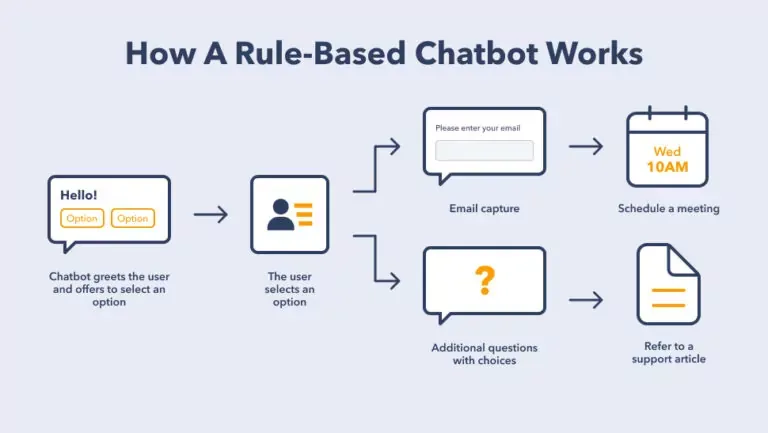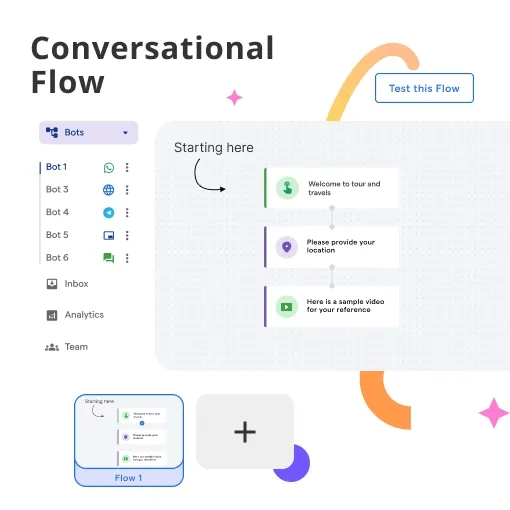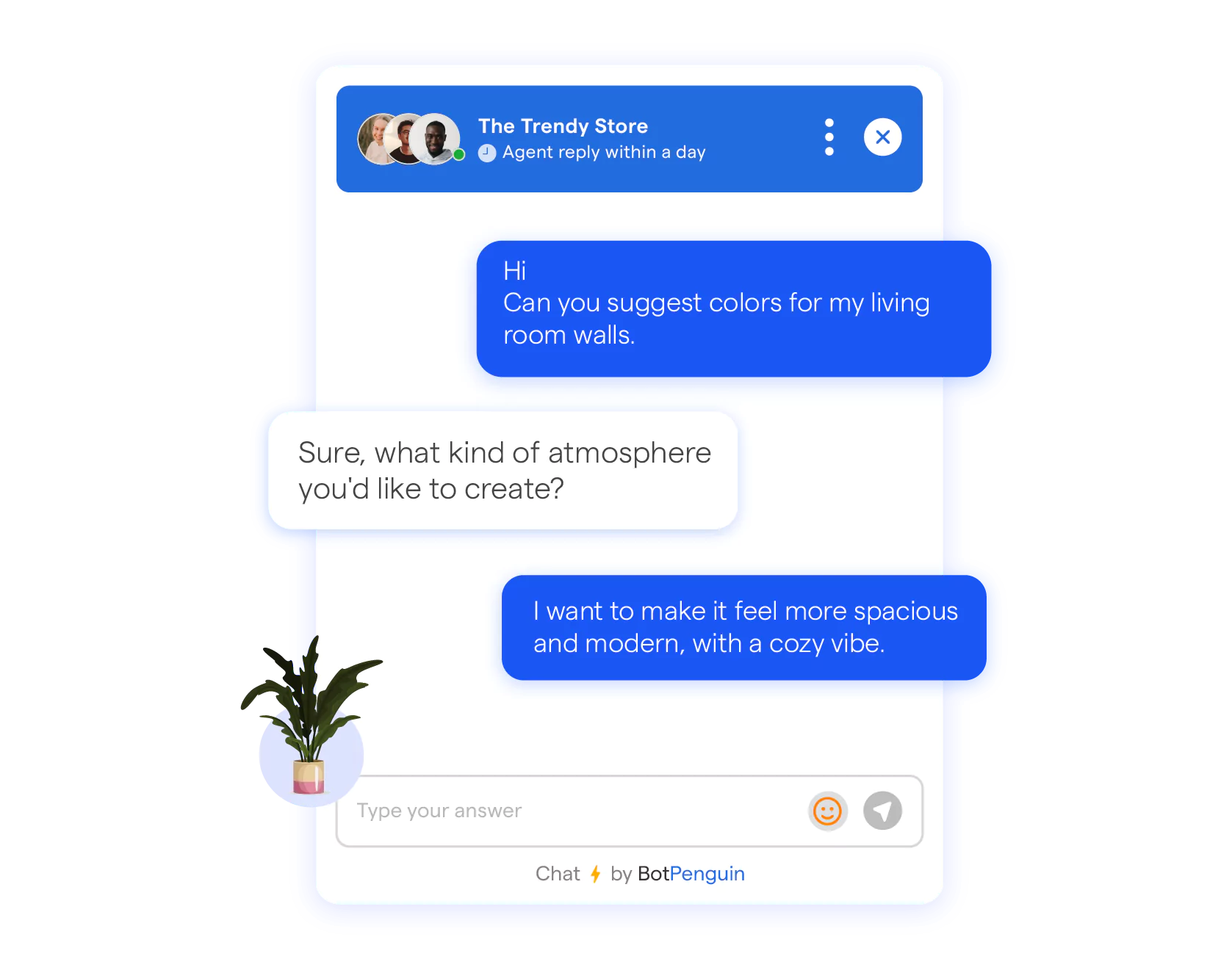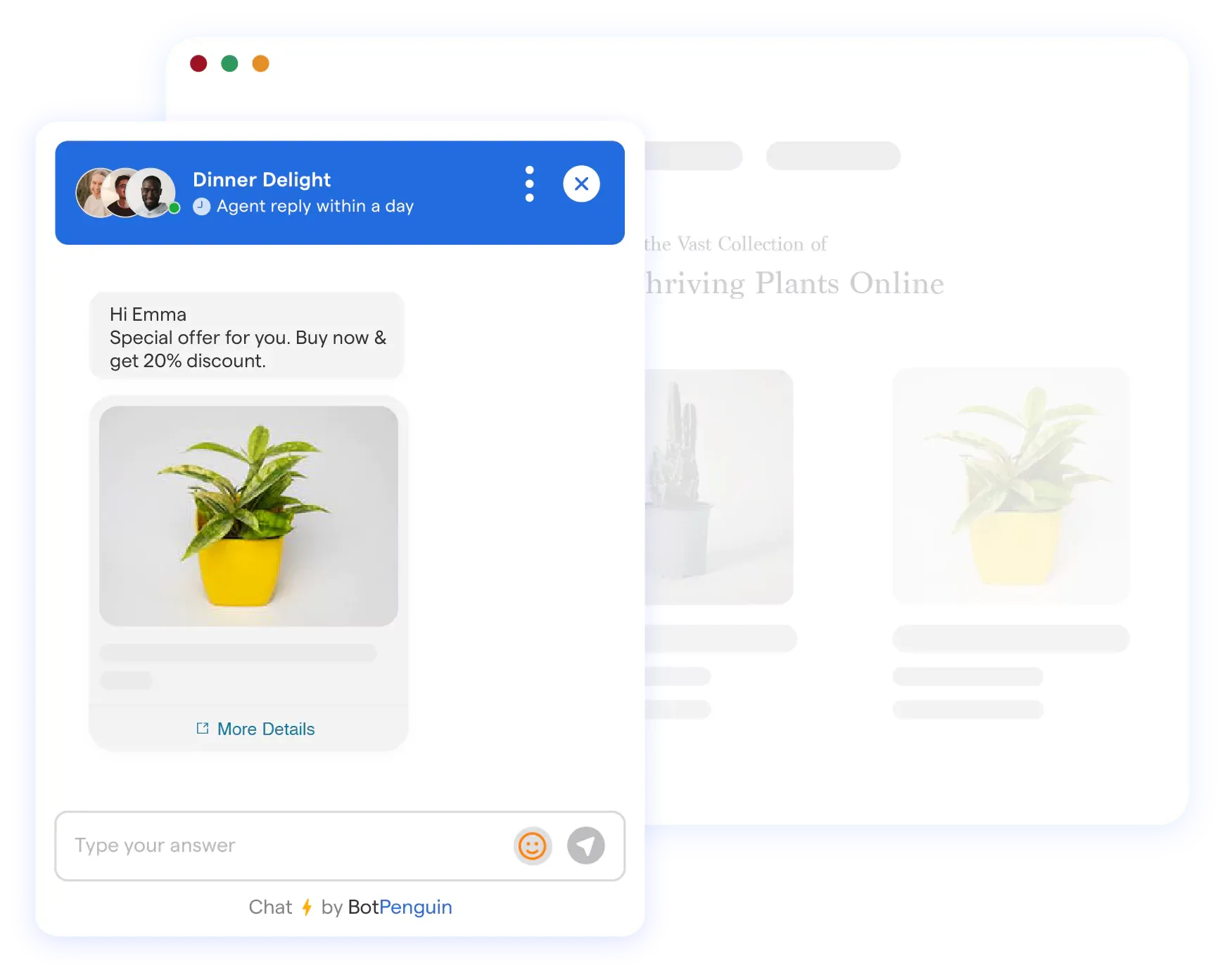What is a Rule Based Chatbot?
Rule-based Chatbot is a type of chatbot that operates on a set of predefined rules. It uses a decision tree to guide users through a conversation and provide them with relevant information.
Rule-based Chatbot has been around for a while, with the first chatbot, ELIZA, being developed in the 1960s. Today, Rule-based Chatbot is becoming increasingly important in modern business, as it helps companies provide better customer service and streamline their operations.
How do Rule based Chatbots Work?
Rule-based Chatbot works by following a set of predefined rules that dictate how it should respond to user queries. These rules are typically based on keywords or phrases that trigger specific responses.

For example, if a user asks for the store hours, the Rule-based Chatbot will recognize the keyword "hours" and respond with the store's opening and closing times.
Rule-based Chatbot also uses natural language processing (NLP) to understand user queries and provide more accurate responses. One of the advantages of Rule-based Chatbot is that it's easier to develop and maintain than other chatbot types.
The Role of NLP in Rule based Chatbot
NLP is a key component of Rule-based Chatbot. It allows the chatbot to understand user queries and provide more accurate responses.
NLP works by breaking down user queries into smaller components, such as keywords and phrases, and then analyzing these components to determine the user's intent.
This allows Rule-based Chatbot to provide more personalized responses and improve the overall user experience.
Why Use Rule based Chatbots?
- Simplicity in Designing: Rule-based chatbots are designed with predefined rules. They don't require programming knowledge or complex machine learning algorithms, making them simple to create and manage.
- Predictable Responses: With responses strictly following a set of predefined rules, these chatbots provide consistent and predictable customer interactions, ensuring a coherent user experience.
- Efficiency in Handling Queries: Rule-based chatbots are excellent at handling straightforward and repetitive customer inquiries, freeing up human customer service representatives to tackle more complex issues.
- Low Maintenance: Given their "set and forget" nature, rule-based chatbots require little maintenance. Changes are only necessary if business rules or customer interaction requirements change.
- Compatibility with Multiple Channels: Rule-based chatbots can function on several platforms like websites, social media, and messaging apps, making it easier to reach customers no matter where they choose to interact.
- Cost-Effectiveness: A rule-based chatbot can save costs by reducing the workload of customer service teams, handling multiple inquiries simultaneously, and operating round-the-clock without additional staffing costs.
How to Create a Rule based Chatbot?
Building a rule-based chatbot can be a fun and rewarding task. Let's explore the steps you'll need to follow in this process.
Determine the Goals
Before getting started, consider the purpose of your chatbot. Identify the main tasks it should perform, the target audience, and how it will streamline communication.
Keep these goals in mind as you plan and develop your chatbot.
Design Conversational Flow

Outline the conversational flow for your chatbot, which includes defining the possible inputs from users and the chatbot's responses.
Consider different scenarios and how the chatbot should handle user queries, even unexpected ones. For a rule-based chatbot, outline a comprehensive flow with if-else or conditional statements.
Choose the Right Technology
Select the appropriate tools and platforms for creating your rule-based chatbot. Some popular options are Dialogflow, Microsoft Bot Framework, and TARS, to name a few.
These tools provide pre-built templates and easy-to-use features for non-programmers. Compare their functionalities and pricing tiers, and choose the one that aligns with your project goals.
Develop and Train the Chatbot
Using the chosen tools, begin building the chatbot's conversational flow, integrating the rules and conditions you outlined earlier.
Be sure to teach your chatbot how to handle errors and redirect users to appropriate fallback options when necessary.
Further, incorporating the use of natural language processing (NLP) can help your chatbot process user inputs more effectively.
Test, Improve, and Deploy
Now it's time to test your chatbot to ensure it operates smoothly and correctly. Enlist testers to interact with the chatbot and provide feedback.
Analyze their interactions for any issues or areas requiring improvement. After tweaking and refining your chatbot, deploy it on the chosen platform, like a website, mobile app, or messaging service.
Training a Rule-based Chatbot

Training a Rule-based Chatbot involves providing it with the necessary data and feedback to improve its accuracy and effectiveness.
Here are some techniques for training a Rule-based Chatbot:
Importance of training a Rule-based Chatbot
Training a Rule-based Chatbot is important because it allows the chatbot to improve its accuracy and effectiveness over time.
By analyzing user interactions and feedback, the chatbot can learn to recognize patterns and respond more accurately to user queries.
Techniques for training a Rule-based Chatbot
One technique for training a Rule-based Chatbot is to analyze user interactions and feedback to identify areas where the chatbot is struggling.
This can help you refine the chatbot's decision tree and improve its accuracy. Another technique is to use A/B testing to compare the effectiveness of different responses and conversation flows.
Challenges in training a Rule-based Chatbot
One of the challenges of training a Rule-based Chatbot is that it requires a large amount of data to be effective.
Additionally, it can be difficult to anticipate all of the different ways that users might phrase a query, which can lead to inaccuracies in the chatbot's responses.
Implementing a Rule-based Chatbot
Implementing a Rule-based Chatbot involves integrating it with existing systems, deploying it on various platforms, and maintaining and updating it over time.
Here are some best practices for implementing a Rule-based Chatbot:
Integration of Rule-based Chatbot with existing systems
To integrate a Rule-based Chatbot with existing systems, you'll need to ensure that it can access the necessary data and APIs.
This may involve working with IT teams to develop custom integrations.
Deployment of Rule-based Chatbot on various platforms
To reach the widest possible audience, you'll need to deploy your Rule-based Chatbot on various platforms, such as Facebook Messenger, Slack, and your website.
Each platform may require different development and deployment processes, so it's important to plan accordingly.
Maintenance and updating of Rule-based Chatbot
To ensure that your Rule-based Chatbot remains effective over time, you'll need to maintain and update it regularly.
This may involve monitoring user interactions and feedback, refining the chatbot's decision tree, and updating its responses to reflect changes in your business.
Limitations of Rule-based Chatbot

While Rule-based Chatbot has many benefits, it also has some limitations. Here are some of the main limitations of Rule-based Chatbot:
Constraints of Rule-based Chatbot in handling complex queries
Rule-based Chatbot is best suited for handling simple queries that can be answered with a set of predefined rules.
It may struggle to handle more complex queries that require a deeper understanding of context and intent.
Challenges in scaling Rule-based Chatbot for large businesses
As your business grows, it may become more challenging to scale your Rule-based Chatbot to handle a larger volume of queries.
This may require additional resources and infrastructure to support the chatbot's operations.
Comparison of Rule-based Chatbot with other chatbot types in terms of limitations
While Rule-based Chatbot is easier to develop and maintain than other chatbot types, it may be less accurate and personalized.
Machine learning-based chatbots, for example, can learn from user interactions and improve over time, making them more effective at handling complex queries.
Frequently Asked Questions (FAQs)
What is a rule-based chatbot?
A rule-based chatbot is a type of chatbot that follows a predefined set of rules and responds to user queries based on those rules.
How do rule-based chatbots work?
Rule-based chatbots analyze user input, look for keywords, and based on predefined rules, they generate a corresponding response from their knowledge base.
What are the pros and cons of rule-based chatbots?
Pros: Simple to create, easy to maintain, and require less computational power.
Cons: Limited conversational abilities and cannot handle complex or ambiguous queries.
When is a rule based chatbot suitable?
Rule-based chatbots are suitable for simple applications like answering FAQs, providing product information, and guiding users through basic tasks.
Can rule based chatbots learn on their own?
No, rule-based chatbots cannot learn on their own. Their capabilities are restricted to the rules and responses defined by developers.

